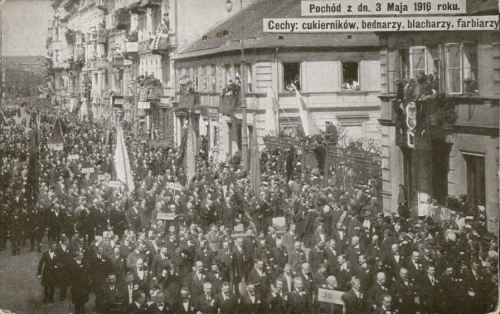The effort of building a state
The road to Polish independence is usually portrayed in the military context, personified in the figure of Józef Piłsudski, as well as from the perspective of diplomatic actions undertaken by Roman Dmowski. Nonetheless, there is one element in this picture which is usually forgotten but is by no means less important. It was the effort put into the rebuilding of the Polish state, which had been awaking more and more determination since 1915 among those involved.
The first steps were taken on the least controversial ground – the municipal one. After the Germans took Warsaw, two civic committees – the Central and Warsaw Committees gained the ranks of actual national representation. The chairman of the latter, pr. Zdzisław Lubomirski also became the president of the capital. Formally, Warsaw once again became the capital city on September 21st 1915, but there were more important steps than this symbolic one – the attempts to lead the policy of done facts in such important matters as education and judiciary. The Polish courts worked only between August 5th to September 11th, since after that they were abolished by the Germans. Even still, the Polish education was in much better shape, with the Polish university and university of technology opened on November 15th in Warsaw. It was a clear sign, that the base for the Polish state, prepared so vigorously for years, was finally coming true.
Municipal government in the Kingdom
On the same level of importance, was the re-creation of the Polish municipality in the Russian controlled Kingdom of Poland – the Warsaw elections took place a year after the Russians retreated, on July 16th 1916. However; the most seen, massive, patriotic demonstration strongly expressing the will of the society at the time, was the march for the 125th anniversary of the founding of the May 3rd Constitution - on the streets of Warsaw there was a huge demonstration participated by over 200 thousand Poles; although, this anniversary was celebrated in both occupied territories, especially in Lublin.
The works on the cornerstones of Polish statehood intensified following the November 5th act. Even though, both the Temporary State Council and its successor, the Temporary Commission and finally the Regent Council remained strictly dependent on the central states, the number of Polish-spirited activities was on the rise.
